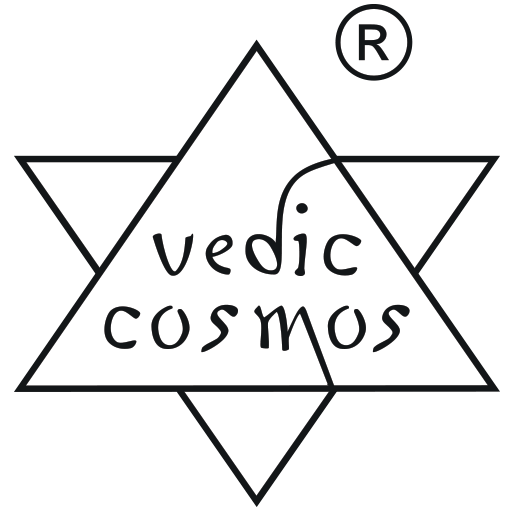
Kāla – The Eternal Fabric of Creation
The Sanskrit word ‘Kāla’ has several connotations, each of which informs an aspect of the concept of time in the Bhāratīya tradition. To name a few connotations attached to the word Kāla – time, fate, death, the God of death, the color black. Most significant of these senses conveyed by the term Kāla, is the sense of time. Unlike in western understanding, time is not linear in the Bhāratīya tradition. Nor is it considered a reality. Time is considered an illusory concept that comes into existence when creation is in place, and is considered cyclic. In that, what is present today neither has a beginning nor an end. The beginning or birth is an illusion of creation, and the end or death is the disappearance from creation or verily the disappearance of creation itself. To put it in simple terms, time is a unit that measures the existence of all created objects. When created beings cease to exist, so does the unit that measures it. Just as all created beings are conceptualized as a reflection of the divine or a spark of the divine, so too is time. The Supreme Being thus becomes the unit that measures the span of each created being, which too in reality, are sparks of the very same divine. The Supreme Being also becomes the force (kāla as death) that causes the cessation of a created being, for it is his will that sustains creation. He is thus referred to as Kālakāla. Parāśara states in the Viṣṇu-Purāṇa,
कालस्वरूपं विष्णोश्च यन्मयोक्तं तवानघ।
kālasvarūpaṁ viṣṇośca yanmayoktaṁ tavānagha|
As I have stated earlier, Time is Viṣṇu himself.
Kāla, time, is set in motion with the appearance of the first being, Brahmā. The life span of this first creation then becomes a yardstick in the measurement of the life span of all creation. Brahmā is said to remain created for a period of a hundred years that is referred to as ‘param’. However, these hundred years are not comprised of what we popularly understand to be a year. A day in Brahmā’s life span is not the classic day known to us, that is made up of twenty-four hours. For the sake of better understanding – A day in Brahmā’s life is the duration during which the three worlds of Bhū, Bhuva and Suva are said to be sustained. Purāṇas state that these three worlds are destroyed when night falls upon Brahmā and sleep takes over. In other words, the hundred years spoken of as the life span of Brahmā, are, for want of a better expression, divine years. Let us now start with the basic unit of time in mortal terms and build up to ‘param’, the life span of Brahmā.
The time taken for the blinking of the eyes of a resting man is said to be a nimeśa or a mātrā. Fifteen nimeśas comprise a kāṣṭha. Thirty Kāṣṭhas make a kalā, and thirty kalās are said to make a muhūrta. Thirty muhūrtas constitute one day and one night of a mortal. Fifteen days are comprised in a fortnight and two fortnights or thirty days make a month. Six such months make an ayana (or the time taken by the sun to progress north or south of the ecliptic). Two ayanas comprise a year in the mortal world.
Uttarāyaṇa or the time taken by the sun to progress north is said to be the day of the devas or celestials, and dakṣiṇāyana or the six months taken by the sun to progress south, is said to be a night. In other words, approximately three hundred and sixty-five mortal days comprise a day in celestial terms. Twelve thousand celestial years make a caturyuga or a cycle of four epochs. A thousand such caturyugas constitute a day in the life span of Brahmā, and seventy-one caturyugas are collectively called a Manvantara, or the time when a particular divine entity under the title ‘Manu’, reigns. It must be borne in mind that, three lower worlds are destroyed and recreated with every new day in the life of Brahmā.
It is stated that the worlds of Bhū, Bhuva and Suva are consumed in fire when Brahmā falls asleep, and that the denizens of the next world, Maha, resort of the higher world of Janaloka, unable to bear the heat of annihilation. Brahmā then awakens the subsequent morning and creates the three lower worlds afresh. Brahmā’a life span is said to be a hundred years of such days. The hundred years are collectively known as a Param and are subdivided into two parārdhas (or half-paras). The first parārdha is called the Padma-kalpa, and the second parārdha is termed Varāha-kalpa. At the end of a Param, Brahmā too returns to the state of non-existence in what is termed the Mahāpralaya or absolute cataclysm. All fourteen worlds are reduced to the state of non-existence then. After a period of abysmal non-existence, it is stated in the Vedas that the Supreme wills for creation to take place all over again, and the cycle beginning from a nimeśa to the Param commences all over again. Thus, Kāla is both cyclic and an illusion in the Bhāratīya tradition and a reflection of the Supreme Being. It is also the eternal fabric upon which creation is sustained.
कालोऽस्मि लोकक्षयकृत् प्रवृद्धो
लोकान् संहर्तुं इह प्रवृत्तः।
kālo’smi lokakṣayakṛt pravṛddho
lokān saṁhartuṁ iha pravṛttaḥ|
I am Kāla, the destroyer of the universe, risen. I have proceeded forth to consume all created beings (of the fourteen worlds).
– [Bhagavadgītā]
कालमुहूर्तादिमयश्च कालो न यद्विभूतेः परिणामहेतुः।
अजन्मनाशस्य समस्तमूर्तेरनामयस्य सनातनस्य॥
kālamuhūrtādimayaśca kālo na yadvibhūteḥ pariṇāmahetuḥ|
ajanmanāśasya samastamūrteranāmayasya sanātanasya||
The birthless one who is beyond decay, is ancient, and is one personified as all (of creation). He is Kāla, comprised of moments, hours and years. It is by his prowess that change accrues to us.
– [Viṣṇu-Purāṇa]
Time as understood on earth
| Time taken for the twinkling of the eyes | = | nimeṣa/1 mātrā |
| 15 nimeṣas/mātrās | = | 1 kāṣṭha |
| 30 kāṣṭhas | = | 1 kalī |
| 30 kalās | = | 1 muhūrta (approximately 48 minutes in modern time) |
| 30 muhūrtas | = | 1 day and 1 night (24 hours) |
| 15X30 muhūrtas | = | 1 pakṣa (fortnight) |
| 2 pakṣas | = | 1 māsa (month) |
| 6 māsas | = | 1 ayana (time taken for a solstice) |
| 2 ayanas | = | 1 samvatsara (year) |
Time in celestial terms
| 1 samvatsara (in human terms) | = | 1 celestial day |
| 365 celestial days | = | 1 celestial year3 |
| 12,000 celestial years | = | 1 caturyuga (cycle of four epochs) |
Time with regard to Brahmā
| 1000 caturyugas | = | 1 day for Brahmā (approximately 1,598,700,000,000 mortal days, after which the three worlds of Bhū, Bhuvaḥ, Suvaḥ are destroyed) |
| 365 Brahmā days | = | 1 Brahmā year |
| 50 Brahmā years | = | 1 parārdha |
| 2 parārdhas | = | lifespan of Brahmā |








